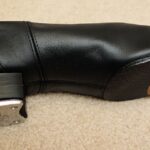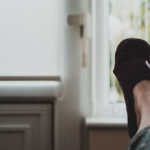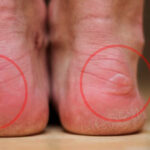After a long day of thrifting, you come home to find the pile of shoes sitting in front of you. You start sorting through them and then realize that many are not salvageable.
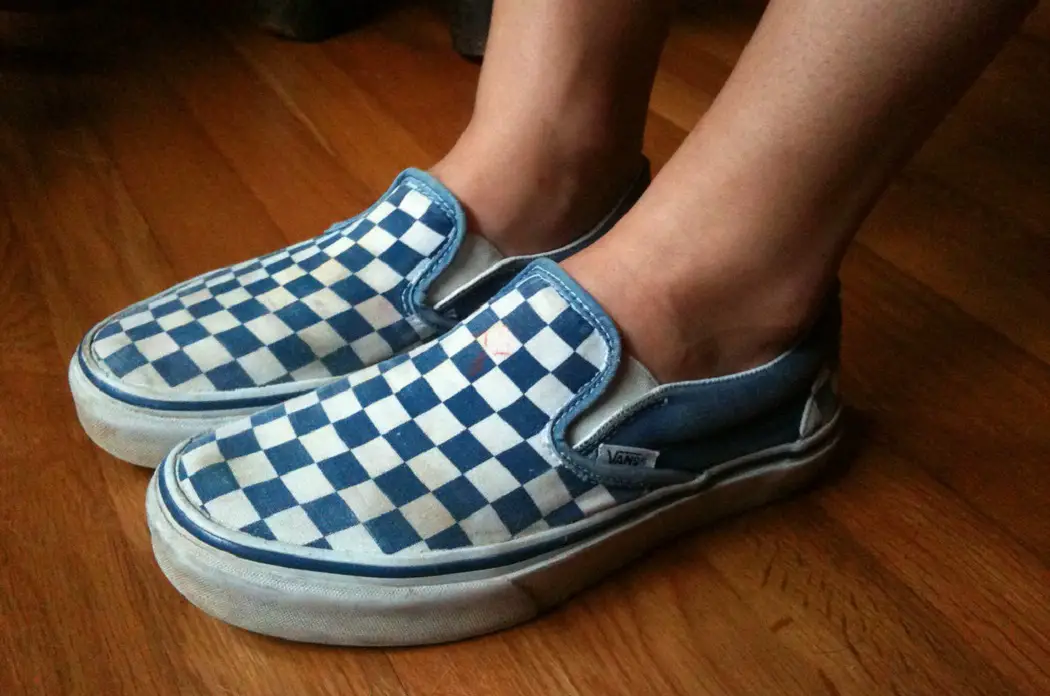
That is no problem! We have put together a list of our favorite tips & tricks for how to clean thrifted shoes right from your home. These methods will help keep your shoes looking new as well as save money by getting more use out of them!
What Are Thrifted Shoes?
Thrifted shoes are second-hand shoes that have been previously worn. The name “thrift” comes from the word “thrive,” which is an old English term for prosperity or well-being. Thrift stores sell donated goods to raise money for their organization and help people in need.
Is It Good or Bad to Shop at Thrift Stores?
Thrift stores can be a jackpot for clothes and other household items you need but don’t always want to spend much money on buying new ones. But what about the used stuff that’s up for sale? Is it safe and good enough quality to buy second-hand?
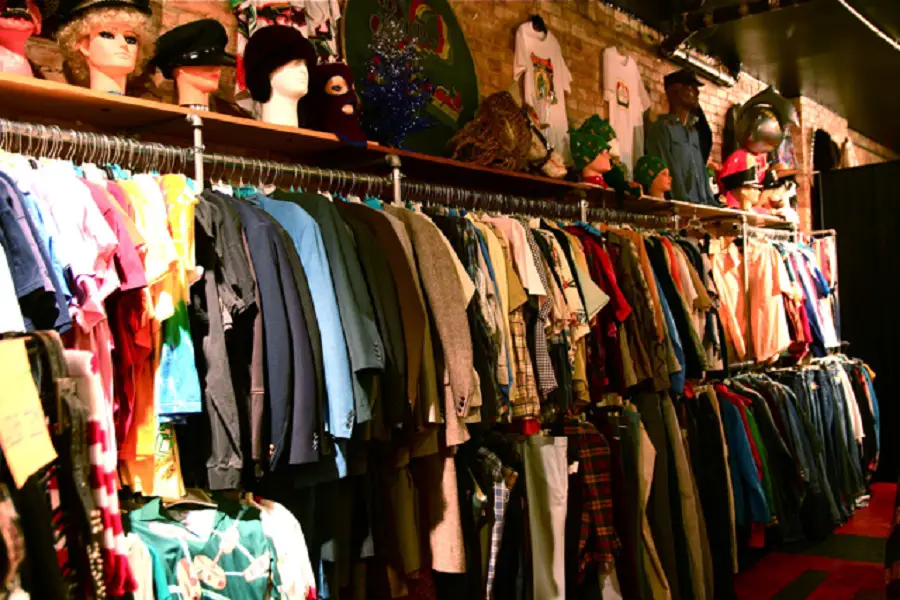
The answer is yes! There are plenty of things that might make us think otherwise, like the idea we’re getting someone else’s junk or using our hard-earned cash on something with unknown origins – but these are all just myths. With a little knowledge of proper handling techniques, shopping at thrift stores has a lot of benefits.
Useful Benefits to Shop at Thrift Stores
- Thrift Stores are great for finding affordable clothes and household items
- Sometimes, we get lucky to find branded or designer clothing at thrift stores that are much cheaper than it would be new, which also helps support the environment by saving on resources like water and energy used in production – not to mention cutting down carbon emissions from transportation!
- It’s a good idea to examine a piece before you buy it just as you would if buying something brand new because sometimes there might be tears or other damages that make the item unappealing.
Some people think this means they’re getting someone else’s junk but don’t worry, most thrift store employees will clearly mark any damage with tags or a red sticker that says “AS IS,” and you can still find great items for your wardrobe even if they do have some flaws. - When it comes to shoes, thrift stores are an excellent place to hunt down unique finds at affordable prices because people often donate new or barely worn pairs of footwear when they get bored with them.
How to Clean Thrifted Shoes
- First, remove any dirt or debris from the shoe using a dry cloth. Don’t use soap to clean your shoes since it will get them wet and make them smell bad.
- Next, fill a bucket with warm water and add two cups of white vinegar for every gallon of water. So soak your shoes for one hour, making sure to completely submerge them.
- Remove the shoe from the water and scrub it with a dry cloth or brush to get any remaining dirt off of the surface. Rinse thoroughly in cold water before putting it back in its original packaging if possible. If not, store away from other items that may be affected by moisture until they are dry again on their own.
- Check for stains by wiping with a wet cloth. Clean as needed until no more residue is left on the surface of the shoe – this could take some time, depending on how much stain there was initially.
- The smell test to see if you can clean the shoes or not. If it smells like mold, mildew, sweat, and fungus, then they are likely too damaged for cleaning so throw them out.
- Alternatively, if you don’t care about the shoes smelling like vinegar for a little bit and want to skip that step altogether, use dish soap.
- Use warm water instead of cold water when rinsing your shoe with dish soap since it will help get off any residue from the detergent.
- If there is still dirt on your shoe, try using an old toothbrush to scrub it away.
- Lastly, dry the shoes with a towel or allow them to air dry or you can let them dry naturally away from direct sunlight.
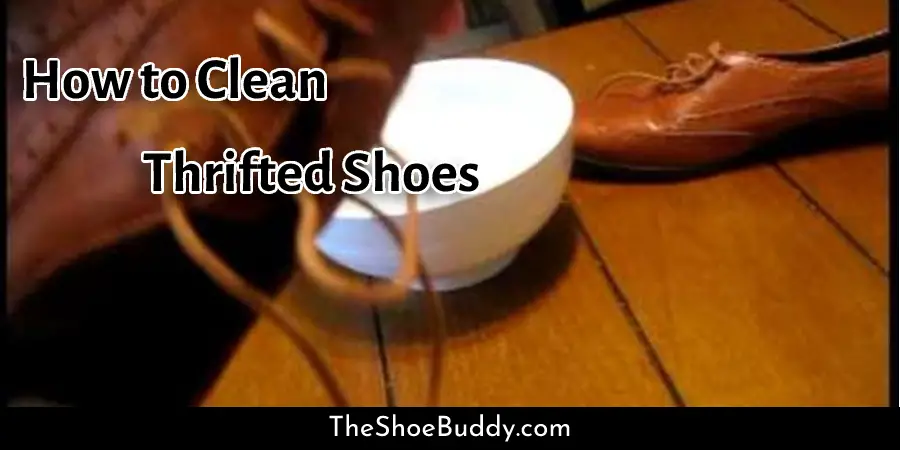
Things You’ll Need To Clean Thrifted Shoes
- Lemon juice
- Vinegar
- Water
- Baking soda
- Hydrogen peroxide and water (ratio depends on age/type of shoe)
- Detergent
- Brush / old toothbrush
- Shoe polish/conditioner
- Olive oil
- A rag or towel, paper towels,
- a lint roller
- vacuum cleaner with attachments.
How to Sanitize Used Shoes
- You can use a mix of hydrogen peroxide and water (ratio depends on age/type of shoe) to sanitize the shoes.
- Let them sit for 15 minutes, then rinse with plain water.
- You can also use a mix of baking soda and water to sanitize the shoes.
- Fill the shoe with enough baking soda to cover it, then add water.
- Let it sit for 15 minutes before rinsing out the mixture and allowing the shoes to air dry.
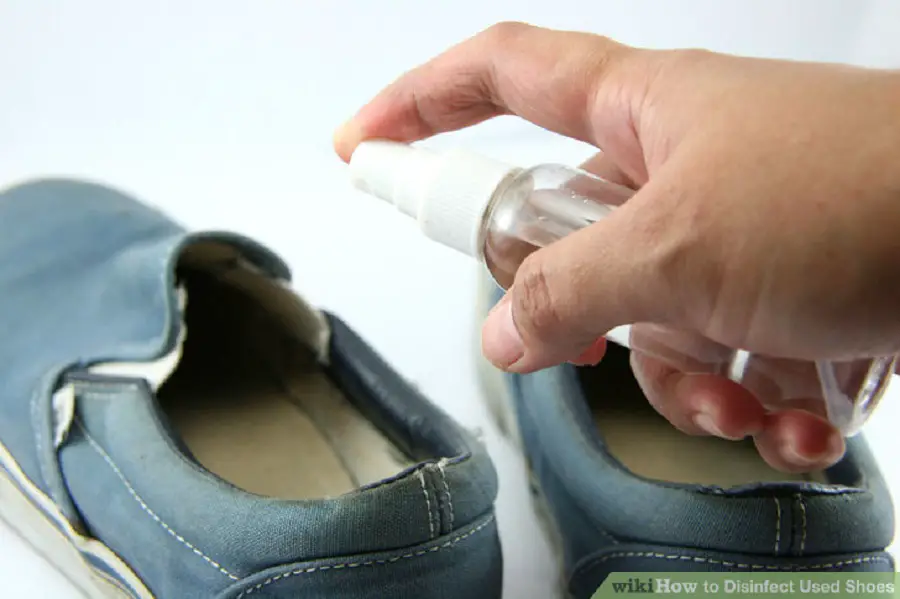
Tips on Buying Thrifted Shoes
- Try on shoes in several sizes. The best way to know if a shoe will fit is by wearing it, but measuring your foot beforehand can be helpful and you may find that size 11 fits just right when size 12 was too big for you.
- Measure feet before buying new shoes
- Don’t buy cheap slip-resistant soles without trying them out first
- Avoid any old tennis or running sneakers with holes near the toes or at the heel area as they’re likely worn down from overuse and have been stretched beyond their limits; this could lead to injury during exercise.
- Thrift stores are great places to find deals on quality items for a fraction of the retail price.
- Be cautious when buying shoes from thrift stores, they may have been worn many times before and could be covered in mold or even bedbugs!
- Don’t buy old running shoes that are falling apart at the seams
- When it comes to athletic gear such as sneakers, always wear them for about five minutes on the carpet first because some products can lead to serious foot issues if not broken in properly.
How to Disinfect Shoes From Fungus
- Wipe the shoes down with a damp cloth. Spray them generously with alcohol or bleach and scrub vigorously to remove any dirt, mold, fungi, etc. Rinse thoroughly in water and dry off completely before wearing.
- To disinfect your shoes from bacteria, use Lysol spray combined with rubbing alcohol; it will kill 99% of germs on contact. Use sponges for tough spots like between the toes or behind laces where most bacteria hides out – but make sure you rinse well afterwards because the mixture is not safe if ingested!
- If people are around who have been sick (or even if they haven’t), try using hydrogen peroxide instead of Lysol: its higher dilution level makes it less likely that these individuals will react badly to it, and the lack of alcohol means there’s less chance they’ll get a burn.
- Swap your shoes with other people in order to keep them fresh. This will keep the bacteria off of them, and over time their odors should disappear. If you want to make your shoes smell better, try using a dryer sheet in each shoe before putting it away for storage or wearing.
- To remove stains without scrubbing: soak the stain with water first so that all surface dirt is removed, and then spray the area with a mixture of water and vinegar.
- Cleanse regularly by sprinkling baking soda on fabric shoe covers or sprays made for this purpose (and be sure not to use too much as this could damage the leather).
- Try using hand sanitizer that has moisturizing properties: these are designed so you can just wipe over everything without worrying about getting wet.
- Foot powder is another great option, as it can absorb sweat and won’t become messy.
- Clean the insides of your shoes by stuffing them with crumpled up newspaper or tissue paper: this will allow you to get into tight corners while also absorbing liquid that may have accumulated inside.
- Donate or throw away old socks every few days in order to minimize bacterial buildup on the surfaces you touch most often.
Things to Keep in Mind When Using Thrifted Shoes
- Avoid wearing a used shoe that has been worn by someone with foot fungus.
- Wipe the inside of your shoes thoroughly before you wear them for the first time to avoid any dirt or dust getting into the fabric and causing an allergic reaction. You can follow our instructions above on how to clean thrifted shoes to get a more precise idea.
- Store thrifted shoes in your closet, on their own shelf so they don’t get mixed up with other peoples’ ugly footwear and make it impossible to find yours when you need them.
- When taking off a pair of thrifted shoes after use, take care not to spread bacteria from one surface to another (such as spreading dirt onto carpet). Take off each shoe individually and either place it on top of its mate or put down a clean cloth between pairs. Remember to always put the shoe on last.
- If you’re not sure if a thrift store has an electronic sensor, hold up your hand to the sensors with one of your shoes and see which one beeps.
- Cleaning: The best thing is to buy some enzymatic cleaner from Target or Walgreens that kills bacteria quickly without harsh chemicals or bleach. Mix it according to instructions (usually about ten parts water for every part enzyme), then soak dirty items in it for 15 minutes before scrubbing them clean with a brush or rag. If there’s any residue left over after spraying down everything else, use a natural detergent like castile soap diluted in warm water as needed.
Frequently Asked Question
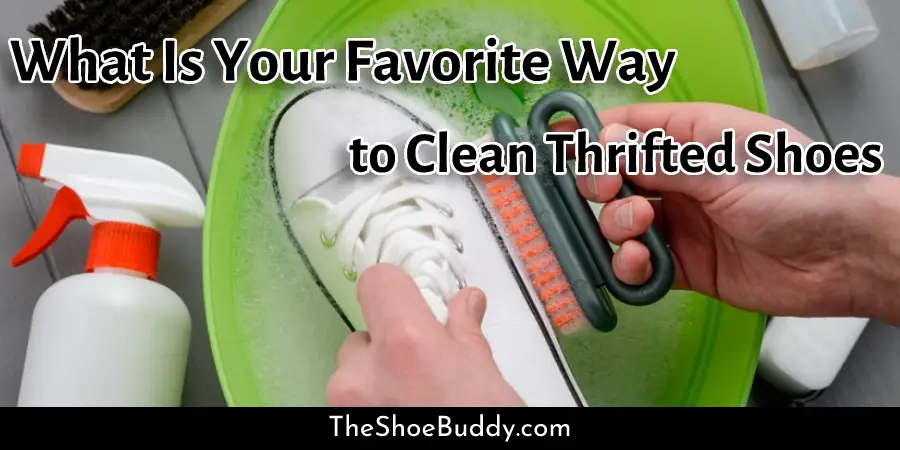
What Is Your Favorite Way to Clean Thrifted Shoes?
There are a lot of different ways to clean thrift shoes. My favorite way is with a mixture of water, vinegar, and baking soda. I use my favorite spray bottle from The Container Store to mix the solution in. After shaking it up well, I fill it with warm water to rinse them off.
Another way to clean thrifted shoes is with alcohol and vinegar. Soak the shoe for a couple of hours in a mixture of one part vinegar, two parts water, and four parts rubbing alcohol. This will disinfect your shoes as well! You can air dry them after removing them from the solution if you want to speed up the drying process.
How To Clean Thrifted Shoes Lining?
I use an old toothbrush to scrub out any stains in the lining before giving them a final rinse with tap water and letting them air dry. This can also be done with a damp cloth or paper towels that have been moistened under running water, then blended with baking soda on one side of it. Slide this cloth inside the shoe and scrub out all of those nasty germs!
How Do You Clean Dirt & Debris In Between Your Toes?
You can use a cotton ball or tissue to clean the dirt and debris from between your toes. Simply wet it with water, and then rub it against the skin of your foot. This will help get rid of any dirt that is stuck in this area.
What Are the Things That You Should Avoid Doing When Cleaning Thrifted Shoes?
One of the mistakes you might make when cleaning thrifted shoes is using ammonia-based cleaners. These may remove stains, but they can also weaken or destroy some types of leather and ruin suede and nubuck finishes. It’s best to stick with gentle soap solutions like dishwashing detergent mixed with water, lemon juice, or mineral oil.
You may also want to avoid using a wet sponge in your shoe cleaning process; the moisture from it can cause leathers and fabrics to deteriorate faster than they would on their own, so use cotton cloths instead.
Conclusion
Cleaning your thrift store finds is easy and inexpensive! This post has given you all of the tips you need to get started on cleaning those old, dusty shoes that are taking up space in your closet, with a solution of 2 tablespoons of dishwashing liquid and 1-gallon hot water.
Soak them for an hour or two, then scrub the soles with a toothbrush to remove dirt from between the treads before drying in direct sunlight. The sun will help dry out any remaining moisture while disinfecting at the same time!
We hope this blog post was helpful in teaching you how to clean thrifted shoes. If not, we are here for you and your shoe cleaning needs! Let us know if there is anything else we can help with.



